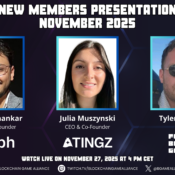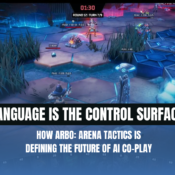
What Web3 Game Investors Really Want: Vision, Patience, and Playability
At a time when capital is scarce and investor expectations are higher than ever, a recent panel during our side event in San Francisco, in the middle of GDC, and hosted by Emfarsis’ Co Founder Leah Callon-Butler brought together three voices actively shaping the funding landscape in Web3 gaming: Olivier Gemayel of Kameha Ventures, Daniel Derzic of Hartmann Capital, and Eunielle Yi of Dracoon Ventures. Together, they offered a grounded, practical perspective on how founders can—and can’t—raise funding in 2025.
The conversation, far from the hype-laden dialogues of past years, underscored a decisive shift in the mindset of Web3 investors: this isn’t about fast exits or flashy tokenomics anymore. It’s about long-term vision, community alignment, and actual gameplay.
Beyond the Deck: The Power of Vision
Despite only being three weeks into his tenure as a VC, Olivier Gemayel cut straight to the heart of what matters most.
“What turns me off completely is the lack of vision,” he explained. “You’re not raising venture capital just to launch a game. You’re raising it to build something that can scale into a platform, an ecosystem, or even a movement.”
For Gemayel, who has founded six companies before stepping into the investor seat, venture capital is not the right fit for founders who are chasing short-term wins. “A quick win is not a venture win,” he said. “If that’s your goal, we’re not aligned.”
His words reflected a broader truth that resonated across the panel: VCs are not just betting on products—they’re betting on founders who can paint a picture of the future and bring others along for the ride.
From Play-to-Earn to Play-to-Stay
While funding in Web3 gaming hit record lows in 2023, the investors on this panel remain actively deploying capital. But they’ve become more selective, favoring projects that are grounded in entertainment value and user retention, rather than speculative mechanics.
Dracoon Ventures’ Eunielle Yi gave the example of Cathedral Studios, a horror-themed FPS her fund backed early on.
“When they did their NFT sale, we played the prototype build—and it was actually fun,” she said. “That’s rare. Too many teams are building for crypto-native players and ignoring the broader gaming audience.”
Yi emphasized that projects which treat Web3 as an afterthought—or worse, as a quick fundraising gimmick—rarely pass the first filter. “We’re not interested in founders who just want to add tokens to check a box,” she said. “We want to see real game design, with mechanics that could survive without the blockchain.”
The Equity vs. Token Debate
As expected, the panel couldn’t avoid discussing the tokenization trend that continues to divide both investors and builders.
Daniel Derzic, who leads investments at Hartmann Capital, acknowledged that token warrants are still a common request from investors—but stressed they should never come at the cost of long-term value creation.
“The venture model isn’t built for liquidity-first plays,” he said. “Tokens can be useful if they’re tied to a real user economy, but they’ve also pressured too many teams into launching before they’re ready.”
Yi echoed that sentiment, noting that many of the most successful Web3-native studios today are the ones who focused on equity first, then added token layers later—when it made sense. “We look for both,” she said, “but only when the token has purpose.”
Gemayel added that tokens, when used purely as a fundraising mechanism, often reveal a deeper problem: the founder’s misalignment with the venture model itself.
Choosing Capital That Fits
The panel also tackled a subtle but critical point: not all investors are the same, and not all capital is “smart money.”
Yi encouraged founders to do their own due diligence when taking meetings. “Ask about value-add. Ask about expectations. Ask whether they’ve backed games before,” she said. “Too many founders are just relieved to get a yes—they don’t realize it might be the wrong yes.”
All three speakers stressed the importance of founder-investor alignment, especially when it comes to product timelines and token launch pressure. “If your investor is pushing you to rush a TGE for their liquidity, that’s a red flag,” said Yi. “Find someone who’s ready to support your vision, not shortcut it.”
Start the Conversation Before You Need the Money
Perhaps the most actionable advice came when a founder in the audience asked whether they should delay outreach to investors until they’re truly ready to raise.
All three panelists gave a resounding “no.”
“You should always be talking to investors,” said Gemayel. “Build the relationship early. Let them see your progress. When the time comes to raise, it won’t be a cold start.”
Yi added that sending investor updates—even when not fundraising—is a powerful way to build trust and demonstrate consistency. “Share your KPIs. Share your builds. Let them see you evolve.”
Derzic noted that understanding investor language is part of the founder’s job. “The more conversations you have, the better you’ll understand what each fund looks for. That’s how you avoid wasting time—or worse, pitching to the wrong room.”
Final Thoughts: The Long Game Wins
As the conversation wrapped up, Callon-Butler summed it up best: in today’s market, capital is available—but only to those who earn it.
Web3 gaming is no longer about raising fast and launching faster. It’s about building meaningful experiences, aligning with the right backers, and maintaining a vision that can survive multiple cycles.
And perhaps most importantly, it’s about making games that people actually want to play—with or without the blockchain.
Tags
Recent Posts





